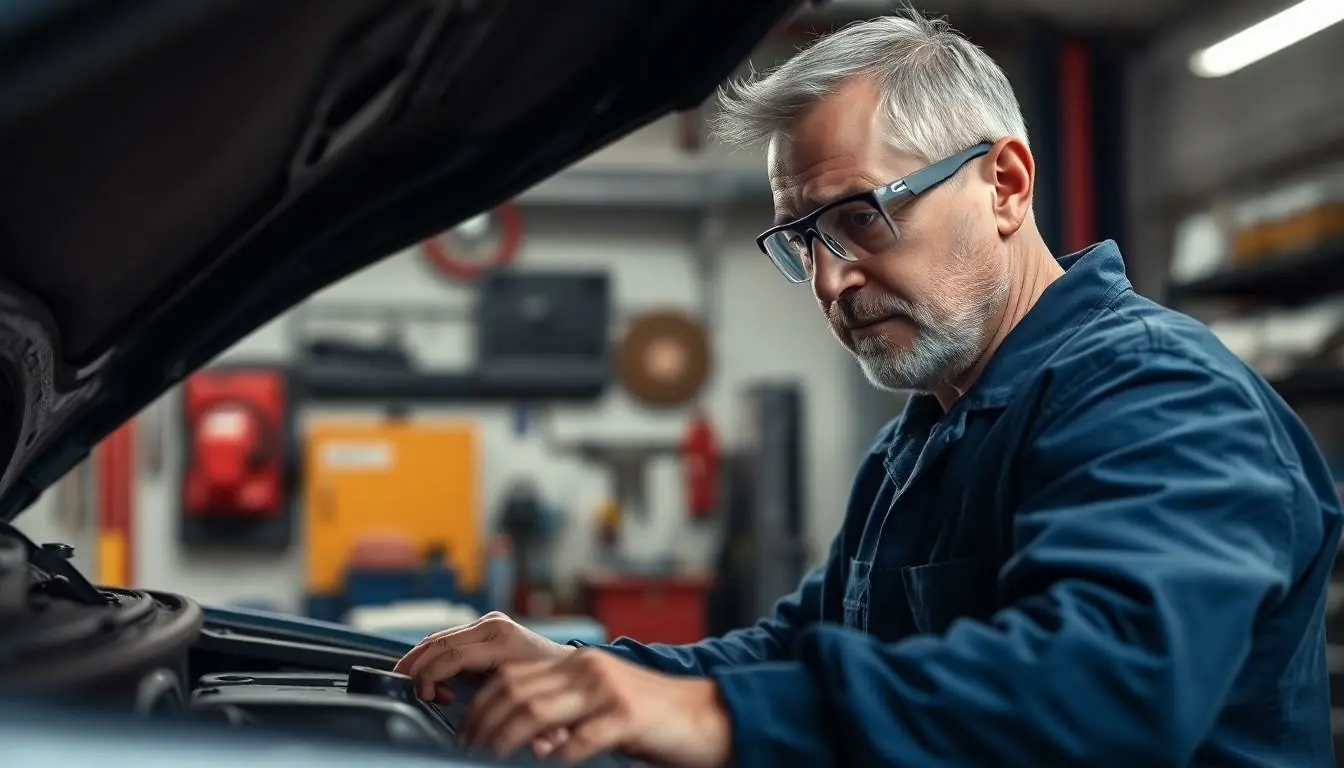In the world of home and vehicle care, two terms often steal the spotlight: repair and maintenance. While they might seem like interchangeable best friends, they’re really more like frenemies. Maintenance is that diligent friend who shows up on time to keep everything running smoothly, while repair is the dramatic one who arrives only when disaster strikes.
Table of Contents
ToggleUnderstanding Repair vs Maintenance
Repair and maintenance represent two essential components of home and vehicle care. They serve distinct purposes, each crucial for longevity and functionality.
Definitions and Key Differences
Repair refers to actions taken to fix broken systems or components. It addresses specific issues that disrupt normal operation. Maintenance involves routine activities designed to prevent problems from occurring. It focuses on preserving the condition and efficiency of equipment. While repairs restore functionality, maintenance enhances reliability by reducing the likelihood of future issues. Understanding these differences plays a key role in effective asset management.
Importance in Various Industries
Various industries depend on effective repair and maintenance strategies. The automotive sector prioritizes maintenance schedules to ensure vehicle reliability and safety. Regular service can prevent costly breakdowns and extend vehicle lifespan. In manufacturing, maintenance practices improve operational efficiency by minimizing downtime. Proactive maintenance prevents equipment failures that can halt production. Both sectors illustrate how balancing repair and maintenance maximizes performance and reduces overall costs.
Types of Repairs

Repairs can be categorized into various types based on urgency and frequency. Understanding these categories helps in effective planning and resource allocation for property and vehicle care.
Emergency Repairs
Emergency repairs require immediate attention to address critical issues. Examples include plumbing leaks that cause significant water damage or electrical failures that pose safety hazards. Prompt response to these repairs prevents further damage or risk. Homeowners should prioritize emergency repairs to ensure safety and minimize costs. Professionals typically handle these urgent tasks to provide expert assessment and resolution.
Routine Repairs
Routine repairs occur on a scheduled basis and address wear and tear over time. These may involve replacing worn-out components or fixing minor issues before they escalate. Regularly scheduled maintenance checks help identify potential problems, allowing for timely repairs. Examples include changing air filters or adjusting braking systems in vehicles. Following a routine repair schedule enhances the longevity of assets while maintaining optimal performance. This proactive approach ultimately reduces the risk of costly emergency repairs in the future.
Types of Maintenance
Maintenance strategies ensure optimal performance and longevity of assets. Key types include preventive and predictive maintenance, each serving distinct purposes within asset management.
Preventive Maintenance
Preventive maintenance focuses on scheduled activities that prevent problems before they occur. Regularly changing air filters, inspecting brakes, and lubricating moving parts fall under this category. This approach minimizes the likelihood of equipment failure. By adhering to a defined schedule, organizations can enhance reliability and extend the lifespan of assets. Moreover, costs associated with unplanned downtime decrease significantly when preventive measures are in place. Implementing preventive maintenance not only boosts operational efficiency but also provides peace of mind.
Predictive Maintenance
Predictive maintenance leverages data analysis to forecast when equipment may fail. Sensors and monitoring tools gather real-time data, enabling technicians to assess asset conditions accurately. This proactive approach allows for timely interventions, preventing unexpected breakdowns. For instance, vibration analysis can indicate potential issues with machinery. Organizations benefit from reduced maintenance costs and improved resource allocation by addressing problems before they escalate. Utilizing predictive maintenance enhances overall productivity while keeping operations running smoothly.
Benefits of Repair vs Maintenance
Understanding the benefits of repair and maintenance aids in making informed decisions for asset management.
Cost Implications
Repair costs vary significantly based on urgency and complexity. Emergency repairs often incur higher expenses compared to routine repairs due to the immediate need for professional assistance. Organizations that prioritize maintenance can reduce total repair costs by preventing major breakdowns. Regular maintenance checks, such as scheduled inspections, often highlight potential issues before they escalate, minimizing unexpected financial burdens. A well-maintained asset can save organizations thousands of dollars in unplanned repair expenses. Thus, focusing on maintenance strategies can lead to long-term savings and enhanced budget management.
Lifespan of Equipment
Equipment longevity greatly depends on consistent maintenance practices. Regular maintenance, including tasks like lubrication and adjustments, extends the useful life of machinery and vehicles. Well-maintained assets typically function more efficiently and experience fewer breakdowns. Conversely, neglecting maintenance can lead to premature failure, reducing equipment lifespan. Inspections and preventive measures ensure components remain in good condition and identify issues early on. Organizations that proactively maintain their assets often see improved performance over time, leading to better return on investment. Prioritizing maintenance contributes to a more sustainable operational framework, benefiting both the equipment and organizational efficiency.
Understanding the differences between repair and maintenance is essential for effective asset management. By prioritizing maintenance strategies, individuals and organizations can prevent costly breakdowns and enhance the longevity of their equipment. Proactive measures not only improve operational efficiency but also lead to significant long-term savings.
Recognizing when to implement repairs versus maintenance ensures that resources are allocated wisely. This approach fosters a sustainable operational framework that maximizes performance while minimizing expenses. Embracing both repair and maintenance practices ultimately contributes to a smoother and more reliable experience in home and vehicle care.





